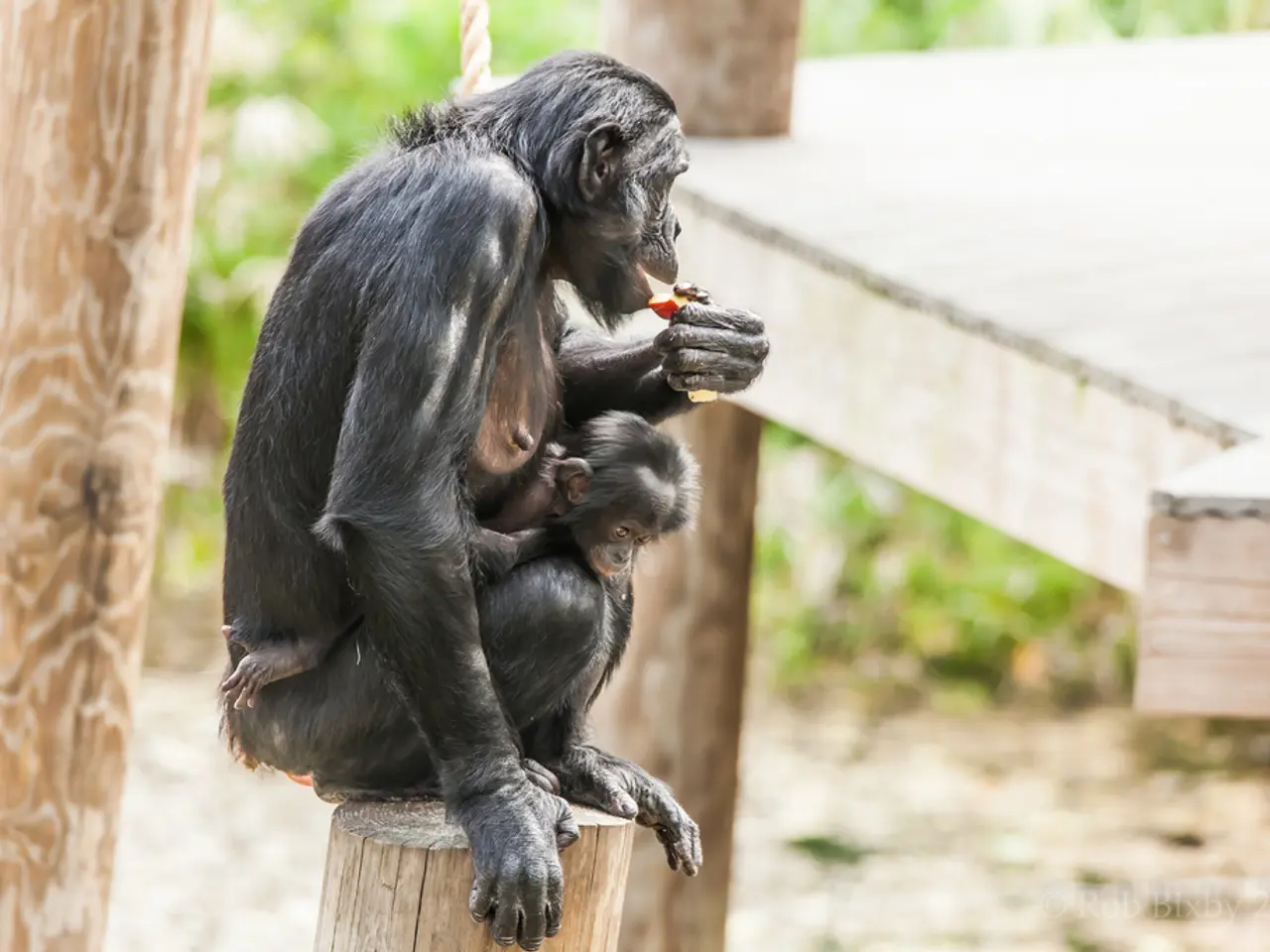Early hominins, our ancestors, often sought out tree-dwelling as a means for survival, driven by the pursuit of food, escape from predators, and the need to rest out of reach.
In the open woodland habitat of the Issa Valley, Tanzania, a fascinating study has been conducted to gain insight into the behaviour of chimpanzees during the dry season. This research, published in Frontiers in Ecology and Evolution, offers valuable clues about why human ancestors who started walking on two legs continued to climb trees.
The Issa Valley, surrounded by riverbanks and small, thick forest, provides an environment similar to that of early hominins. The study reveals that the diet and habitat of chimpanzees living in this area are strikingly similar to our ancient ancestors.
Chimpanzees navigated the canopy by safely climbing trees or hanging under thin branches while standing upright and holding nearby branches. This arboreal behaviour, referred to as arboreality, may provide insight into how extinct hominins lived. Observational studies of great apes demonstrate that they often use bipedalism in the trees for extra balance.
Dr Rhianna Drummond-Clarke, a researcher involved in the study based at the Max Planck Institute for Evolutionary Anthropology in Germany, suggests that the ability to climb trees may have played a significant role in the early evolution of the human lineage. The study suggests that early bipedalism may not have primarily evolved for walking on open ground but instead for moving safely and effectively within the arboreal environment of a fragmented woodland, where trees are sparse and valuable for food.
Unfortunately, there is not much fossil evidence to help scientists understand how early hominins lived. However, this study provides a compelling argument that arboreal living significantly influenced the evolution of human locomotion. The researchers hypothesize that adapting behaviour to forage efficiently in a tree is especially beneficial in sparsely distributed tree habitats like savannah-mosaics.
The study challenges the traditional view that bipedalism arose solely as an adaptation to life on the open savannah after leaving the trees. Instead, it suggests that early hominins maintained their tree-climbing adaptations even after evolving the ability to walk upright because navigating and foraging in trees remained important in their mixed woodland and savannah environments.
Dr Drummond-Clarke's previous research suggested that early hominins might have spent as much time climbing trees as chimpanzees in woodland environments. This new study on chimpanzees in the Issa Valley further supports this hypothesis.
The study was originally published by Cosmos under the title "Why did early hominins climb trees?" and offers a fresh perspective on the evolution of human locomotion. It calls for more studies on different aspects of chimpanzee foraging in similar habitats to gain a more comprehensive understanding of this fascinating subject.
Furthering research becomes vital in understanding the evolution of human locomotion, particularly in the fields of science, health-and-wellness, and environmental-science. For instance, studies on great apes like chimpanzees can provide insights into why our ancient ancestors spent significant time climbing trees. In fact, the researchers at the Max Planck Institute for Evolutionary Anthropology advocate for more research on chimpanzee foraging patterns in various tree-based habitats, such as fitness-and-exercise routines that allow for efficient foraging in sparse tree environments.




